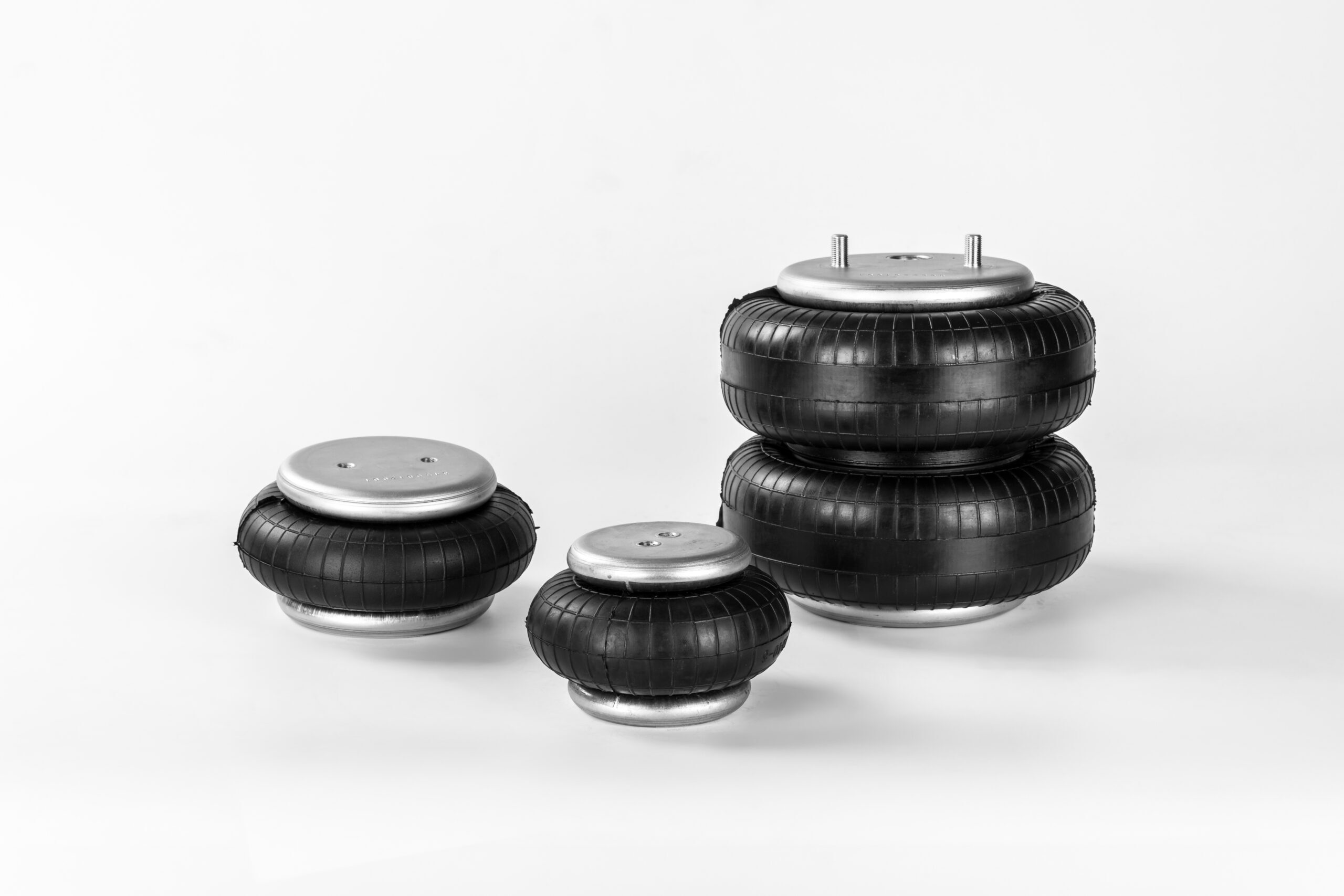How Do Air Springs Work and Why Are They So Important?
Tired of bumpy rides or noisy machinery? Traditional suspension systems often fail to deliver comfort or precision. Air springs offer a smoother, smarter solution.
An air spring uses compressed air inside a flexible rubber bellow to provide vibration isolation and load support. It adjusts to dynamic loads automatically, improving comfort, stability, and equipment protection across various industries.
Let’s explore the science and application behind air springs.
What Is an Air Spring and How Does It Work?
An air spring is a flexible rubber bladder filled with pressurized air that acts like a mechanical spring.
Air springs work by compressing or expanding the internal air volume in response to load changes. The result is a controlled, cushioned motion that reduces shock and vibration.
In a typical air spring suspension diagram, you’ll find the air bladder, piston, and mounting system working together to provide smooth, adjustable support. These systems are crucial in both vehicles and industrial machinery.
What Is the Purpose and Use of an Air Spring?
Air springs provide dynamic load support, vibration isolation, and height adjustability.
They are widely used in commercial vehicles, buses, trains, compressors, industrial machinery, and HVAC equipment. According to industry specifications in air suspension system pdf documents, they enhance machine longevity and human comfort significantly.
Whether installed on trucks or test benches, air springs help protect sensitive equipment from mechanical stress.
What Are Two Key Reasons for Using an Air Spring?
The two main reasons are vibration control and adjustable performance.
First, they minimize mechanical wear by absorbing shocks. Second, they automatically adjust to varying load conditions, improving safety and stability.
Industries like construction, manufacturing, and transportation all rely on these benefits. Their ability to reduce downtime and maintain precision is what makes them indispensable.
How Does the Air Suspension System Work?
Air suspension systems use sensors, air compressors, and control valves to regulate air pressure.
As loads shift or road conditions change, the system adjusts air levels in each spring to maintain ride height and comfort.
The air suspension diagram includes airbags, leveling sensors, and a control module working in sync. This setup allows for smoother rides, better handling, and load leveling in real time.
Why Is Air Suspension So Important Today?
Air suspension has become vital for modern transport and heavy-duty applications.
Its ability to improve ride quality, reduce fatigue, and protect cargo makes it superior to traditional setups.
Among the key air suspension advantages are reduced wear on components, noise control, and the capability to handle uneven terrain without compromising vehicle balance.
Is Air Suspension Better Than Traditional Springs?
In many cases, yes—especially for comfort and adaptability.
While coil and leaf springs offer basic support, air suspension provides adjustable stiffness, height control, and improved shock absorption.
The debate of air suspension vs normal suspension often ends with air systems taking the lead in comfort, despite slightly higher costs and complexity.
What Are the Different Types of Air Springs?
There are three main types: convoluted (multi-bellow), rolling lobe, and sleeve-type air springs.
Each type suits a different load capacity and installation need. For example, rolling lobe types are common in heavy trucks, while sleeve types are used in precision equipment.
Understanding these types helps you match the right product to your application and budget.
How Long Do Air Springs Typically Last?
With proper maintenance, air springs can last up to 100,000 miles or several years.
Factors such as material quality, load frequency, and environmental exposure affect their lifespan.
Choosing high-quality products from trusted manufacturers like Songjiangflex ensures durability and performance, especially under harsh industrial conditions.
What Is the Air Spring Manufacturing Process?
Air springs are produced using precision-engineered molds, rubber compounding, and automated vulcanization.
At Songjiangflex, we utilize CNC cutting, automated forming, and strict quality inspection protocols to ensure consistency.
Each air spring suspension system undergoes pressure testing and fatigue testing, making our solutions reliable for global applications.
What Are the Downsides of Air Suspension Systems?
Despite their advantages, air suspension systems have drawbacks.
They tend to be more expensive, require regular maintenance, and are susceptible to air leaks or compressor failure.
These disadvantages of air suspension system must be managed with quality components, routine checks, and expert installation to ensure long-term value.
Is Air Suspension Legal Around the World?
Yes, air suspension is legal in most countries for OEM or industrial use.
However, in some regions, modifications involving air ride systems for passenger vehicles may face regulatory restrictions. Always refer to local transport laws when installing aftermarket air systems.
Commercial use, such as in logistics and public transport, remains broadly accepted and encouraged due to safety and efficiency benefits.
Summary
Air springs redefine comfort, control, and performance—making them essential across modern vehicles and machines.






